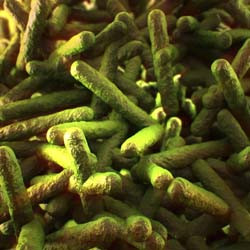Speedy Listeria detector
Currently used sampling and detection systems are plagued by several issues with sample selection and long processing times. As a result, food-borne Listeria contamination is often detected too late, necessitating food product recalls and causing loss of reputation as well as finances. Previously, the BIOLISME(opens in new window) project produced proof-of-concept for highly innovative sampling and detection technologies that can rapidly and selectively detect L. monocytogenes on hard surfaces. The BIOLISME II(opens in new window) (BioliSME II – Demonstration, validation and preliminary promotion of a commercial prototype speedy system for sampling and detecting Listeria monocytogenes) project built on their success and developed functional pre-commercial prototypes. This semi-automatic prototype has sampling and detection subsystems and is contained in a mobile cart. This integrated system minimises the need for specialised personnel as well as facilities. Project partners further optimised the immunoassay developed during the BIOLISME project. Experiments conducted also increased our knowledge about how to prevent or minimise contamination of surfaces with L. monocytogenes. Microbe recovery rates with the BIOLISME II prototypes are an impressive 90 to 99 %, unlike conventional methods with only a 15 % recovery rate. The immunoassay-based detection subsystem can detect even very low levels of L. monocytogenes. Moreover, sample processing takes less than 2 hours, unlike conventional methods that require more than 24 hours. The prototypes were widely disseminated to food industry and food safety professionals and also demonstrated at field trials for further optimisation prior to commercialisation. Dissemination activities include the project website, social networks, publications, press releases, and participation in scientific and technical events such as a workshop. Listeriosis mainly occurs through consumption of contaminated food. Project activities have laid the ground for developing more effective food safety procedures in food industries across the EU. BIOLISME II successfully developed user-friendly, cost-effective and market-competitive functional prototypes and demonstrated their superiority over existing conventional methods. The project has applied for patents and developed a commercial strategy to capitalise on their innovation. This technology could also be adapted to detect other food-borne pathogens, thus enhancing food safety and minimising contamination.







